There are twenty one (21) good companion plants for artichokes in this list and one (1) bad. These include companions for both globe artichokes and Jerusalem artichokes.
Artichoke is a thistle-like plant grown in various places around the world for its flower head which is large and edible. This is the globe, French or green artichoke, Cynara cardunculus var. scolymus, of the daisy family Asteraceae.
Jerusalem artichokes, Helianthus tuberosus, belong to the same family as this thistle plant but they are a sunflower species with a tuber commonly used as a root vegetable. They are known also by other names, including earth apple, sunchoke, sunroot and wild sunflower.
This article, tailored for vegetable garden enthusiasts, zeroes in on globe artichokes, henceforth referred to simply as artichokes. We’ll explore the best companion plants for these large plants, emphasizing the benefits of artichoke companion planting in ensuring a thriving garden.
However, some companion plants for the Jerusalem artichoke are listed and this sunflower species will be referred to as Jerusalem artichoke for distinction.
The edible part of the artichoke consists of an inflorescence, which is a cluster of numerous budding flowers which are little in size. This inflorescence or flower head is held on an edible base before the flowers bloom fully.
When in bloom, the flowers on the head are hard and cannot be eaten. This mass of flowers is called the choke or beard. The base which holds the flowers together is called the heart, and it is this heart that is edible.
Table of Contents
Several cultivars of artichokes exist, including big green, mid sized green, big purple, mid sized purple, spined, white and seed propagated artichokes. See the article on Wikipedia about artichokes to learn more,
Boiled, unsalted artichokes contain 12% carbohydrates, 3% fat, minerals (calcium, copper, iron, magnesium, phosphorus, potassium, selenium, sodium & zinc), 3% protein, vitamins (A, B1, B2, B3, B6, B9, C & K) and 82% water.
To grow properly, artichokes need adequate space to spread. This is because they grow up to 4 feet wide and long. Also, they need exposure to full sunlight or partial shade, light, fertile well drained soil and frequent watering since they are heavy feeders.
The frequency of watering will be dependent on the season. In warmer months, the plant will need to be watered more frequently but in cooler months, the frequency should be reduced. The plant is drought tolerant when established.
Many other crops may be planted with artichokes to encourage their growth, help keep pests away from them, attract useful insects to them, help the soil with nutrients, maximize garden space or shade them from excess sunlight.
Such grouping for the purpose of sharing benefits is called companion planting. It is a tried and true method, ensuring that crops are grown around other crops that help foster their growth. As the good and bad companion plants are listed below, reasons why they are so are also given.
Good Companion Plants for Artichokes
Understanding the symbiotic relationship between different plants is crucial for a successful vegetable garden. Artichokes, with their unique flavor and edible flower buds, benefit greatly from being paired with excellent companions that share similar water requirements and thrive in well-drained soil enriched with organic matter.
1. Asparagus
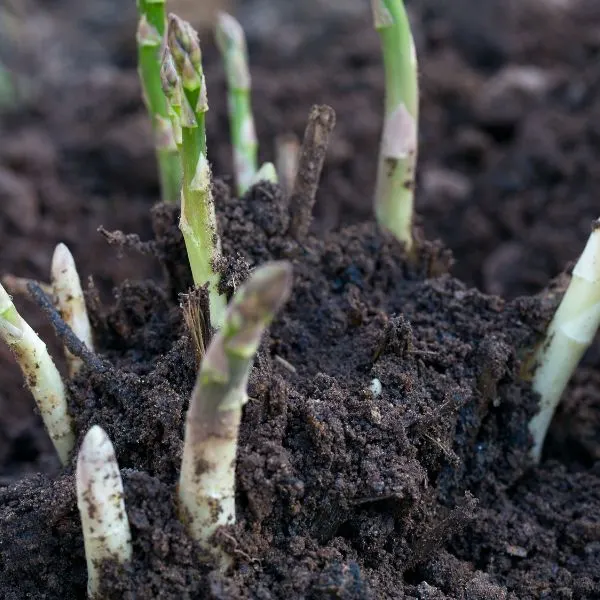
Asparagus serves as a great companion plant due to its deep root system that doesn’t compete with the shallow roots of artichokes. This pairing is especially beneficial in vegetable gardens designed for long growing seasons, aiding in soil quality improvement.
Known by some other names like green asparagus and sparrow grass, asparagus is a perennial flowering plant. It is aromatic and used as a spring vegetable, with its young green or white shoots cooked and eaten.
Asparagus is a good companion plant for artichokes. Both are perennials that like to grow in fertile, moisture-retentive but well-draining soil, with full exposure to sunlight and a regular amount of water that does not leave their roots soggy.
Because asparagus plants have deep roots, they are typically paired with other plants that have shallow root systems, like artichokes. The deep roots can break up clay or soggy soil that is packed together.
The roots of asparagus help loosen up the soil and absorb excess water in it. This reduces the chance of root rot and some of the stress on nearby plants in the garden. These plants are very comfortable being grown side by side.
2. Basil

Basil is a herbaceous flowering herb belonging to the mint family Lamiaceae. Also referred to as great basil, it has a sweet, spicy and slightly peppery flavor. It is cultivated for its leaves and flowers that are used for food in several cuisines.
The seeds of this culinary herb may also be soaked for use in drinks and desserts. Just like other herbs, basil is very aromatic and has a strong smell. It contains oils in the leaves that can be released by gentle touch.
Planted adjacent to artichokes, basil not only is believed to enhance their unique flavor but also acts as a good neighbor by deterring pests, making it one of the best artichoke companion plants.
This pair is comfortable together as both plants love to grow under the same conditions: in full sun and within moist, well drained soil.
3. Beans
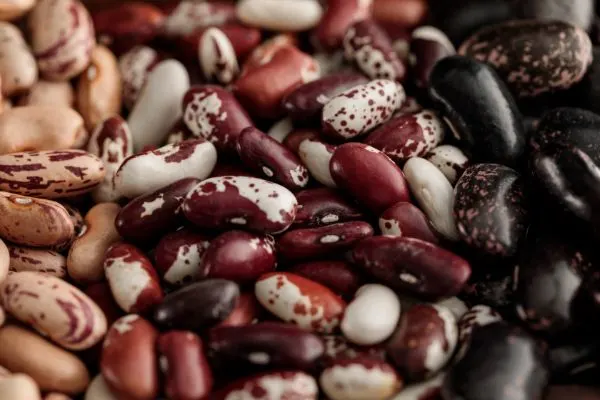
In the quest for pest control within the vegetable garden, integrating beans as companions can create a protective barrier against common pests while fostering a healthy, organic matter-rich soil environment for artichokes.
Beans are seeds of several genera of flowering plants that belong to the botanical family Fabaceae (the pea family). Bean seeds (pulses) are then boiled, fried, baked or cooked by some other method and used as vegetables for humans or animals to eat.
Beans are good companion plants for artichokes because they are legumes, plants with nodules in their roots that help fix atmospheric nitrogen in the soil. They improve the quality of the yield of other plants because they supply nutrients to the soil.
In addition to being good for the health of your soil and the plants in it, bean plants can provide support for the artichoke in your garden, keeping it steady against winds. This applies to both kinds of beans: pole beans and bush beans.
Since your artichokes need a good amount of nutrients and space to spread in the soil, bean plants are good companions for them. This is because beans do not compete with them for nutrients or take up much lateral soil space.
4. Broccoli

Broccoli is a flowering plant in the family Brassicaceae, the cabbage family. It has large, partly developed green flowers that make up its head, stalks and leaves which are the edible parts of the plant, the main reason it is cultivated.
Artichokes and broccoli have similar care and growth needs. Both appreciate full sun, moist but well drained soil and frequent watering. They are both heavy feeding crops that require more nutrients than normal but this is not a problem.
Proper planning and spacing within your garden ensures that both plants do not compete for soil nutrients. Also, broccoli provides good ground cover and helps fill empty spaces in your garden, maximizing garden space in the process.
Differences exist between these two plants however. They will need to be planted in different seasons, as broccoli is best grown in the cooler months of the year while artichokes prefer the warmer ones.
Also, broccoli completes its life cycle in one growing season because it is an annual crop. On the other hand, artichokes are perennial plants. This means that while they last for three or more growing seasons, broccoli needs to be replanted each year.
5. Brussels Sprouts
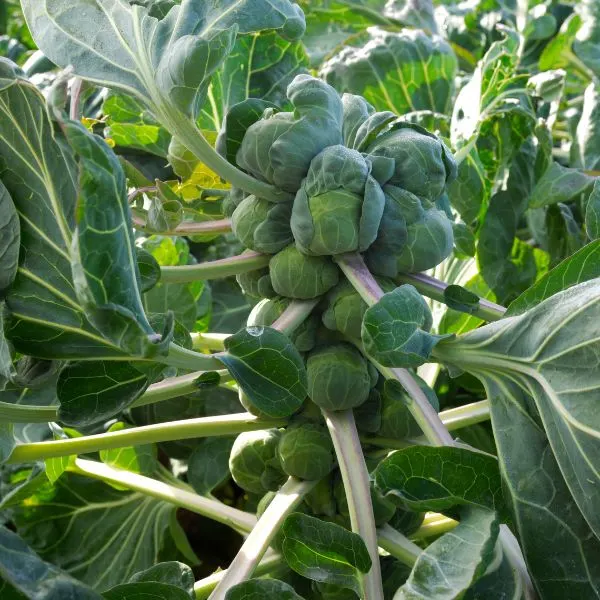
Brussels sprouts are flowering plants in the cabbage family grown for their edible buds. They are green leafy vegetables resembling very small cabbages. As brassicas, they are also heavy feeders like your artichoke.
Growing them together is however not detrimental to the growth of any of the pair. This is because artichokes take up a lot of lateral space. As a result, adequate spacing is taken into consideration when growing artichokes.
Artichokes and Brussels sprouts are also good together because they both need similar amounts of light, water and nutrients. Both crops love rich, moist but well drained soil, full exposure to sunlight and frequent watering.
6. Cabbage
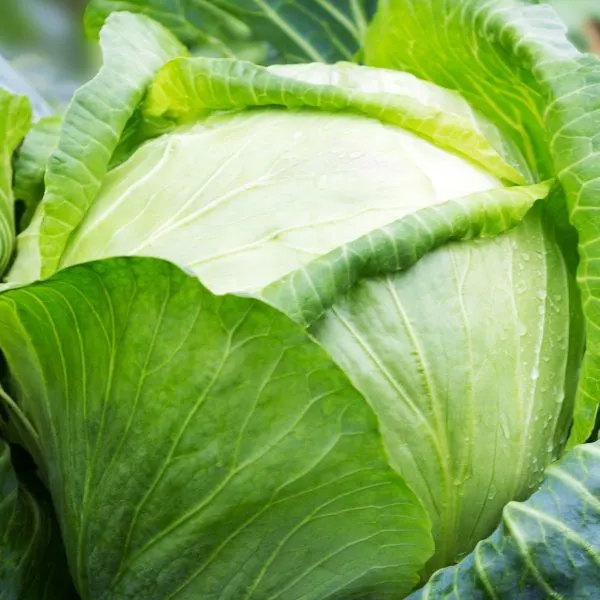
Cabbage is a flowering biennial plant mostly grown as a vegetable crop for its edible and tightly packed leaves. These leaves are layered and may be white, red or green in color. Like other brassicas, cabbage is suitable for artichokes.
As flowering plants, both cabbages and artichokes need animals to aid pollination which is their reproductive process. Bees, butterflies and several other pollinators will be more drawn to each of them when they are grown side by side.
With adequate spacing, what could perhaps be the only downside to this companionship is solved. Because both plants are heavy feeders, it only makes sense that they may begin to compete for root space, sunlight and soil nutrients.
This is however not the case when they are planted far enough from each other. A legume planted around can also ensure that they both have enough nitrogen. Cabbages and artichokes also have similar growth needs.
7. Cauliflower
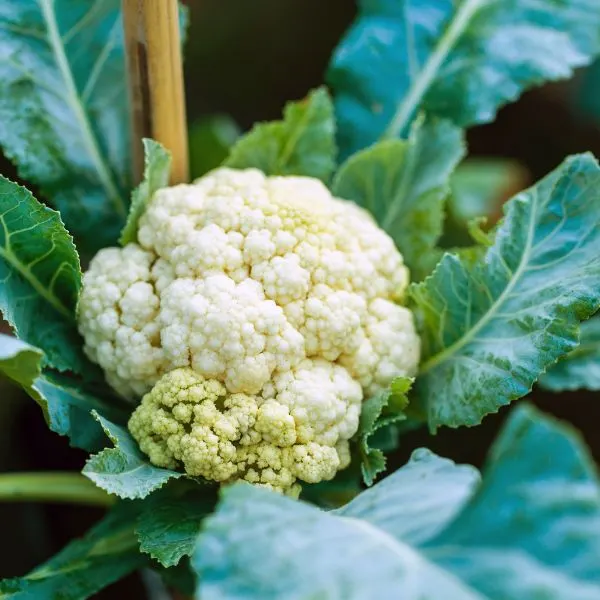
Cauliflower is another flowering plant in the Brassicaceae family, cultivated for its partially developed flowers, referred to as the head or “curd”. The head is edible and mostly in the colors white, yellow, green, orange, brown or purple.
Like other crops within its family, it grows well near artichoke despite the fact that it is also a heavy feeder (if they are spaced properly). Cauliflower and artichoke plants also have similar requirements for optimal growth and yield.
8. Kale

Another brassica that can be planted near your artichokes is kale. Kale, also called leaf cabbage, is a cabbage cultivar grown for its edible green or purple leaves, or for use as an ornamental plant. It is a good companion for artichoke.
Kale can deter pests from attacking your garden plants. Just as artichoke does, this vegetable needs exposure to full sun, adequate watering and moist but well draining soil to grow properly and thrive.
9. Kohlrabi

Kohlrabi is a variety of wild cabbage within the cabbage family Brassicaceae, with thin stems and yellow flowers. It is also known as the German turnip. Its stems and leaves are edible and it tastes very much like cabbage.
This vegetable is suitable for cultivation beside artichoke so long as they are properly spaced. They will not compete for soil nutrients and root space, and they will be comfortable as they need similar amounts of sunlight and moisture.
10. Marigolds

The presence of marigolds in the vegetable garden introduces a layer of mulch and acts as a beacon for parasitic wasps, establishing a symbiotic relationship that benefits the artichoke roots.
Marigolds are mostly herbaceous flowering annual or perennial plants that belong to the daisy family Asteraceae just like lettuce. They are good companions to your artichoke for these two reasons: their flowers and their odor.
They have bold, beautiful, and colorful flowers that come in different sizes and may be gold, orange, white or yellow. They also have a pungent odor and have green feather-like leaves.
Marigolds can serve as very good companions for artichokes. They have a strong scent that helps to repel insect and animal pests. Aphids (especially artichoke aphids), cutworms, mites, thrips, loopers, slugs, snails, and weevils can have detrimental effects on your artichoke.
Marigolds deter certain natural pests of artichokes, including aphids and thrips. They can also attract insects like ladybugs which prey on pests. Marigolds also have beautiful flowers which come in a variety of colors and attract useful insects.
With their bright yellow, orange and red flowers, marigolds can positively impact crop yields. This is because they are known to attract butterflies, bees and other helpful insects like pollinators and pest predators to your garden.
Although marigolds may be used to repel harmful garden pests as they always have been, some evidence exists that they also tend to attract certain pests. Some of these are snails, slugs and thrips.
In this case, marigolds may actually be planted around or near artichokes and utilized as trap crops. When used as a trap crop, the marigold protects the artichoke by attracting these pests to itself. It can also be used to fill empty spots in the garden, maximizing space.
11. Nasturtiums
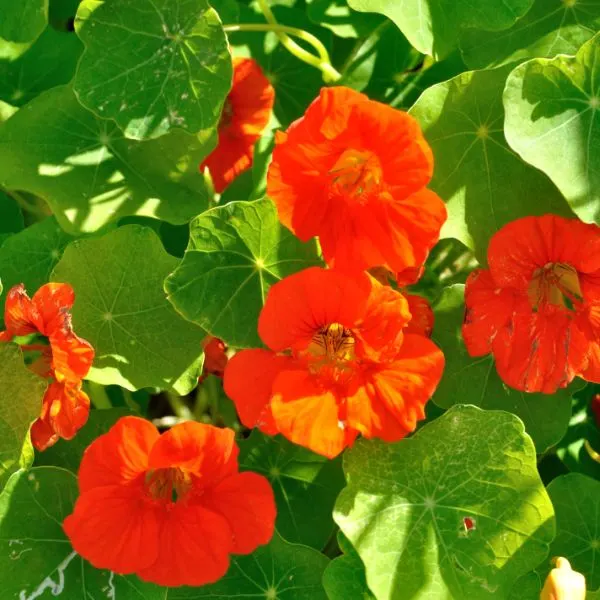
Also known as tropaeolum, nasturtium is a genus of plants that contains several creeping herbaceous plants which may be annual or perennial. These plants have showy round flowers and may be used in herbal medicine or cooking.
Nasturtium is another very suitable companion plant for your artichokes. It is a natural powerful and effective pest deterrent; very powerful and effective. In addition to serving as a trap crop, it may also boost the flavor of plants near it.
When planted with artichokes and some other garden crops, it repels pests that easily and frequently attack them. Some of these insects are aphids, beetles, loopers, squash bugs, and whiteflies.
Nasturtium does attract certain harmful insects such as ants, leafhoppers, squash beetles, armyworms, flies, mites and whiteflies but it attracts them to itself. In the process, it helps reduce the effect of these pests on the artichokes around.
The crop also attracts predatory insects that feed on the plant pests while aiding pollination. Examples are bees, butterflies, hoverflies and parasitoid wasps. It brings them to your garden by its beautiful, vibrant red and orange flowers.
Not only are the flowers attractive to beneficial insects and pests, they simply make your garden more aesthetically pleasing. Nasturtiums are easy to grow, with a peppery scent that can ensure pests are kept at bay.
It is also believed that nasturtiums can improve the flavor profile of crops grown near them, and contribute positively to their health and growth in general (by aiding pollination and helping in the control of pests).
12. Oregano
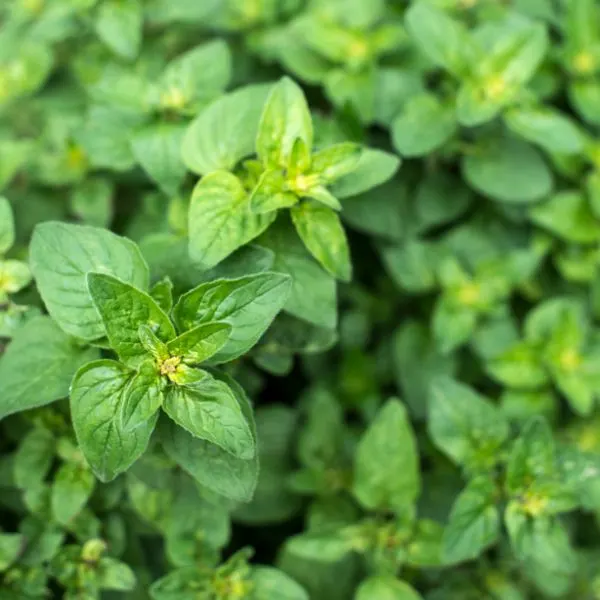
Oregano is a woody perennial plant that belongs to the mint family Lamiaceae. It is a herbaceous flowering plant, which means that it is an aromatic plant with a strong odor and it produces flowers by which it reproduces.
This herb is a good companion plant for the artichokes in the garden. As a flowering perennial plant, it may be harvested after a single growing season but its flowers may not have bloomed yet.
When allowed to blossom, the beautiful flowers of the oregano plant draw several beneficial insects to your garden. They may be agents of pollination, like bees and butterflies, or predatory ones like ladybugs that feed on crop pests.
The flowers of the oregano plant may be pink, pinkish purple, purple or white. They are an attractive addition to your garden, possessing the ability to bring useful insects and animals to the garden even while keeping pests away.
Hummingbirds, green lacewings and ladybugs are some beneficial animals that the flowers of oregano attract. They are all great pollinators for your plants and they also prey on aphids which are pests of artichokes.
Hummingbirds eat flies, ants, aphids, mites, beetles, weevils and mosquitoes. The larvae of lacewings are ferocious predators of aphids. Ladybugs feed on aphids, mealybugs, thrips, maggots, mites, beetles and whiteflies.
Even without its flowers, oregano is beneficial to artichokes. The strong, pungent smell of the oregano itself is able to keep some pests away. Oregano is also a lover of sunlight but it has moderate water needs and is even tolerant of low moisture conditions.
Both plants have very similar growth requirements. They both prefer to be grown in full view of the sun and they undergo stress in soggy soil. When established in the soil, artichokes become drought tolerant just like oregano is.
13. Peas

Peas are herbaceous flowering annual plants in the same biological family as beans, Fabaceae. Also known as garden peas, these plants are cultivated in various parts of the world for their edible seeds. They are not vegetables but they are cooked as such.
Like beans, they are leguminous plants, meaning that they fix nitrogen in the soil. They replenish used up nutrients in the soil this way, so they are very crucial and effective for heavy feeders like artichokes.
Peas and other leguminous plants have nodules in their roots that help fix atmospheric nitrogen in the soil. They improve the quality of the yield of other plants because they supply nutrients to the soil.
There are two varieties of peas: bush or dwarf peas, which do not grow too tall, and vining or climbing peas that grow much higher. Both types may be grown with your artichoke but to maximize the space in your garden, grow bush peas.
Bush peas do not block off the sun from your artichoke which appreciates sunlight; they instead give it enough room to spread out and grow well. Peas and artichokes are also comfortable together because they grow in similar conditions.
Peas do not like full exposure to direct sunlight but rather prefer cooler and more shaded areas to grow and mature properly so both plants may be grown in an area with partial shade. They also like similar soil (moist and well drained).
14. Potatoes
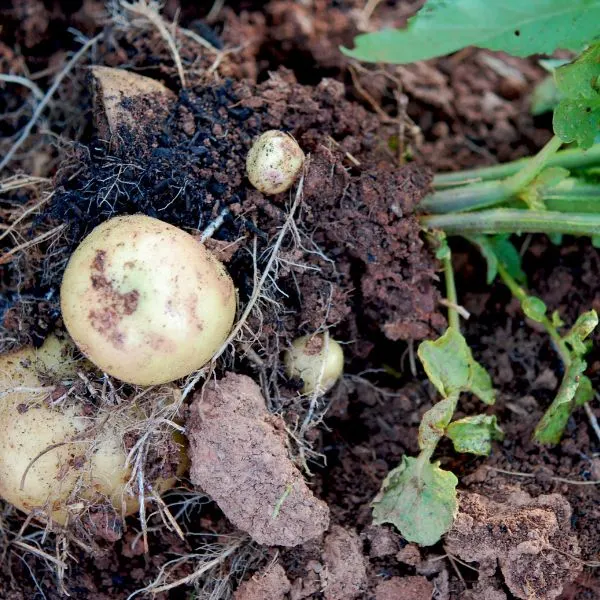
Potatoes are perennial root vegetables belonging to the family of nightshades known as Solanaceae. They are starchy tubers with their vegetative and fruiting parts toxic for human consumption (because they contain a toxin solanine).
They are suitable companion plants for your artichoke. Both plants share growth needs and so growing them together is very comfortable. These crops like to be exposed to full sun and grown in moist but well drained soil.
Because of spacing, the fact that both plants are heavy feeders will not be problematic. They will not compete much for sunlight, root space and soil nutrients.
Potatoes are good at repelling deer but they also attract aphids, flea beetles, spider mites, mice and other rodents. Other plants that repel such pests or attract their predators may be added into the companionship to boost health.
15. Radishes
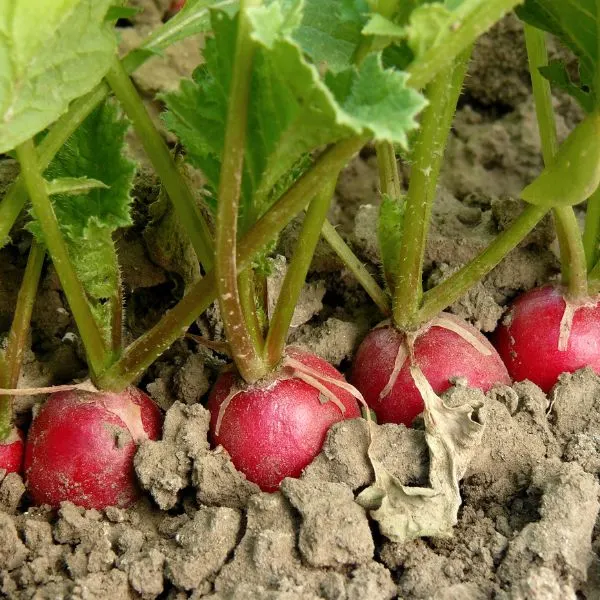
A radish is a root vegetable belonging to the biological family Brassicaceae, the cabbage family. Its roots are edible and so are the leafy greens atop them. They may be eaten raw, which they mostly are, or cooked.
There are several cultivars of radishes in different colors, sizes and shapes. The edible roots and green leaves above it are typically eaten raw as a salad vegetable or with other foods after being cooked by several cooking methods.
Radishes need care and nutrients similar to those that your artichokes need. They are very suitable companion plants for artichokes for this reason. Both crops are comfortable when grown in full sun and moist, well draining soil.
Planting radishes also helps to loosen the soil surrounding your artichokes. This allows the plants more room to absorb the water and nutrients that they need a large quantity of. Adequate spacing ensures that these heavy feeders do not compete.
Because both plants are flowering crops, they help improve the growth and vigor of each other. By their flowers, both radishes and artichokes can attract useful pollinators to the garden to aid the development of both crops.
Radishes are also beneficial because they grow and mature quickly. This means that they are able to serve as ground cover and help suppress weeds, and still be harvested before your artichoke plant needs the space to spread more.
16. Sunflowers
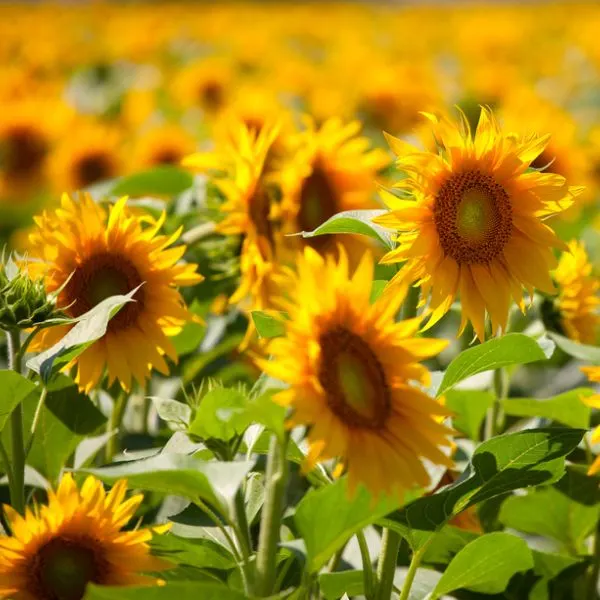
A sunflower is any species of annual and perennial plants that belong to the genus Helianthus in the family Asteraceae, the daisy family. They bear flowers which have large heads, dark disk florets and flamboyant yellow rays.
Sunflowers are great companion plants for artichokes in the garden bed. They can boost pollination, meaning increased reproduction and improved crop yield. They possess beautiful and showy yellow flowers which attract birds and pollinating insects.
The presence of sunflowers makes your garden more visually pleasing, aesthetic and attractive to these beneficial insects. They also do not take up too much space in the garden and so do not inconvenience your artichokes.
While most sunflowers grow to about three to six inches in length, artichokes grow up to four feet long. Thus, artichokes can block off excessive sunlight from your sunflower while still allowing the plant absorb as much as it needs.
Although sunflowers are somewhat drought resistant, they have similar growth needs to those of artichokes. They like sunny areas, although they prefer to be shaded a little, and they too appreciate moist, well draining soil.
17. Sweet Corn
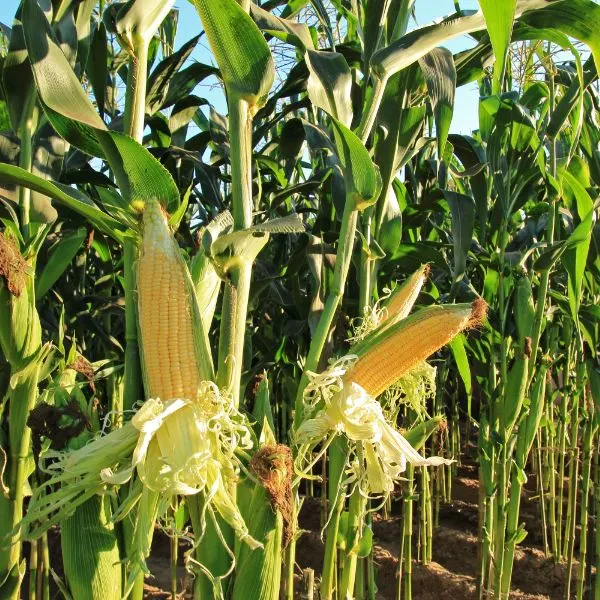
Corn or maize is a species of monocotyledonous flowering plants in the grass family Poaceae or Gramineae. Its leafy stalk produces separate inflorescences known as ears. When fertilized, these ears yield fruits, which are the seeds.
Sweet corn, also called sugar corn and pole corn, is a variety of corn witha higher sugar content grown for man to eat. Sweet corn serves as a good companion for the artichokes in your garden.
As a plant that grows vertically, it is tall and helps to suppress the growth of weeds. The size of the maize plant may make it seem as though its roots are invasive. However, this is not the case as the roots of maize plants are not invasive.
Sweet corn and artichoke plants are also compatible because they enjoy similar growing conditions: they like to be planted in full sun and watered regularly.
18. Tarragon
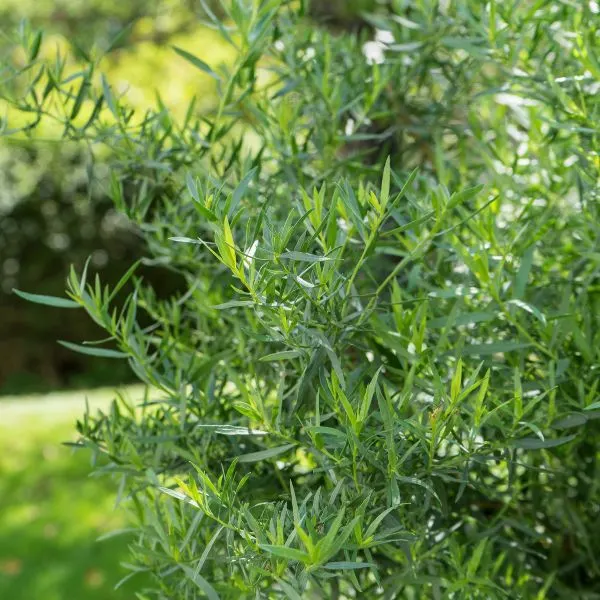
Tarragon, also known as estragon, is a flowering perennial herb which belongs to the family Asteraceae. Cultivated for culinary and medicinal purposes, several subspecies and cultivars exist.
Leaves of a particular variety of this plant are used as an aromatic culinary herb. Although artichokes do not exactly bring their companions or neighbors any benefits, they are not detrimental.
Tarragon is a good companion for artichoke simply because these crops are comfortable growing together. Their lighting, moisture and soil needs are alike and so growing them together will not be much of a hassle.
19. Thyme

Thyme is an aromatic evergreen herbaceous plant in the mint family Lamiaceae. It is a perennial flowering plant closely related to basil and oregano. It is yet another herb that grows well near artichoke and is a good companion plant for it.
Like oregano, thyme is a drought resistant plant. This would seem to be a problem in the earlier stages of the artichoke’s growth when it needs to be watered well but adequate space given between the plants solves that problem.
This companionship brings advantages to both parties. Thyme can act as a repellent for various insect and animal pests that attack garden crops. This plant not only keeps pests away; it is able to attract beneficial ones like pollinators and pest predators to the area.
Growing thyme and artichoke together is also comfortable as both plants need similar growth conditions: exposure to full sunlight and moist, well draining soil. Thyme is another herb thought to improve the flavor of nearby plants.
20. Tomatoes

Tomatoes are South American plants of the nightshade family Solanum. They produce a widely grown mildly acidic fruit also known as tomato, with many varieties. Tomatoes are a glossy red or yellow color, pulpy and edible, eaten raw or cooked.
Artichokes and tomatoes both do well when planted together. They need full sun and moist, well draining soil for optimal growth, although artichokes can also be grown in partial shade. They are heavy feeders.
Although both plants need a lot of water, nutrients and care for the best results, proper planning and adequate spacing ensure that these two crops do not compete for nutrients when grown side by side.
It is important to note that young tomato plants can also take up garden space. Because artichokes also need lots of space to grow properly, consider growing cherry tomatoes in pots instead if there is inadequate space in your garden.
21. Yarrow
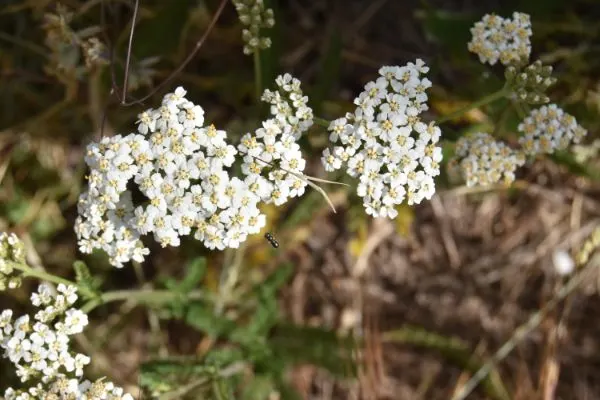
Also known as old man’s pepper, sanguinary, devil’s nettle, soldier’s woundwort or common yarrow, yarrow is a flowering herb in the aster or daisy family Asteraceae. It has a sweet scent and its flowers may be white, yellow, pink or red.
Yarrow has several medicinal uses. It has been used in traditional medicine for hundreds of years. This plant has a smell that is unpleasant to several harmful insects and so it benefits your garden plants generally.
The smell does not adversely affect butterflies which are agents of pollination. Yarrow’s attractive flowers bring useful insects to artichokes. Some are hoverflies, lacewings, ladybugs and parasitoid wasps which prey on aphids.
So yarrow is beneficial to artichoke as it keeps some insect pests away from your plant. It also attracts beneficial insects to your garden. These insects aid pollination or prey on other insects that would otherwise harm your artichoke.
Yarrow is a wildflower which grows best in full sun and moist, well draining soil. It is a drought resistant plant that prefers to be underwatered rather than overwatered. If placed under full or partial shade, it tends to grow long and straggly.
So when planting yarrow with artichoke, make sure to place them in an area with adequate and full sunlight to get the best results. This positioning will be of great benefit to both plants as they need the full sun exposure for optimal growth.
Pollinators like bees and butterflies will likely come to the area on account of the plant. Pest predators such as green lacewings, hoverflies, lady beetles and parasitoid wasps will come as well.
All the insects above help control aphids which are pests of artichoke. Hoverflies also feed on whiteflies and thrips. Parasitoid wasps and their larvae prey on whiteflies and caterpillars too.
Bad Companion Plant for Artichokes
Artichokes do not have a lot of bad companion plants as they are usually well spaced, planted far away from other crops. This is because they are huge, growing long and wide. Their large leaves can easily shade smaller plants grown too near.
It is advised to have ample garden space if you intend to grow artichokes as they are not compact and do not like other plants growing too close to them. With limited space, do not plant anything near your artichoke or avoid growing it altogether.
1. Cucumbers
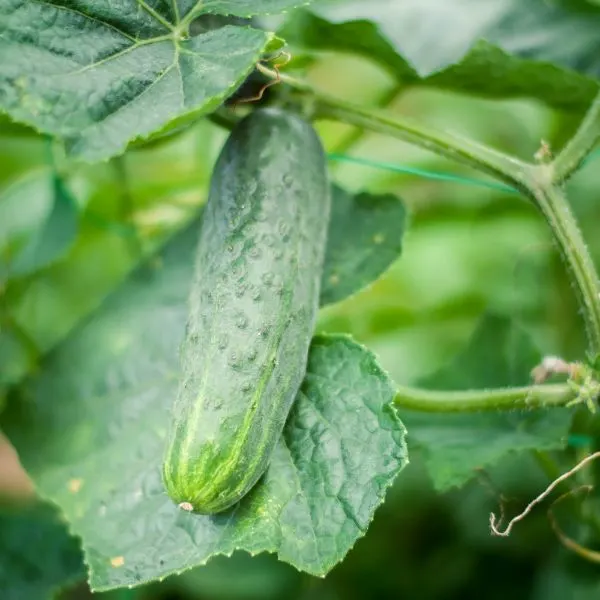
Cucumber is a creeping vine plant considered an annual crop. The plant produces mostly cylindrical green fruits used in cooking as vegetables, usually eaten raw or pickled. This flowering plant belongs to the gourd family Cucurbitaceae.
Both artichokes and cucumbers have similar growth needs. Cucumbers can tolerate partial or full shade but they prefer exposure to direct sunlight for six to eight hours daily. They like lots of moisture and should be watered regularly.
Companionship is not ideal because cucumbers compete with artichokes for soil nutrients and sunlight. Cucumber is also a heavy feeder that ends up taking over the garden bed and leaving artichokes impoverished if close by.
Because they are vining plants, cucumbers need a lot of space to sprawl or crawl while artichokes are bushy plants need to be spaced out properly for optimal growth and crop yield. They compete for sunlight and air with artichokes.
Also, cucumbers need more moisture than artichokes. They need to be watered more frequently and this may constitute a problem for your artichokes. Regardless of the plant beside them, they are so competitive that they make sure they get enough light and nutrients.
Cultivating artichoke beside such a competitive plant when the crop itself is heavy feeder evidently does not produce great results. The crop may not survive this competition, leading to malnourishment and consequently, poor yield.
One plant may end up doing much better than the other, suffocating it in the process, or both of them will be stunted. Either way, the relationship is not optimal; it does not ensure both plants are thriving and healthy.
FAQs
What can you not plant next to artichokes?
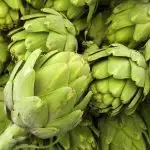
Do not plant cucumbers next to artichokes. They can compete with your artichokes for sunlight, air and soil nutrients.
What herbs can I plant with artichokes?
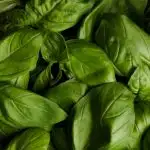
Some herbs that you can plant with artichokes are basil, oregano and thyme.
Can you plant artichokes next to tomatoes?
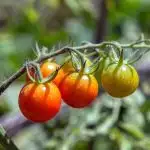
Yes, you can plant artichokes next to tomatoes. Tomatoes do well beside artichokes despite both being heavy feeders if they are spaced properly. They have similar growth needs.
How much space does an artichoke plant need?
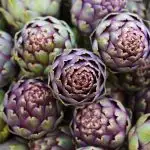
An artichoke plant typically grows up to 3 or 4 feet wide. It needs a lot of space around it so do not plant anything at least one meter around it. If there is not enough space in your garden, growing artichoke plants there may not be the best idea.
Wrapping up
Artichokes are thistlelike plants within Asteraceae, the daisy family, grown for their large and edible flower heads. Listed and explained above are one (1) bad and twenty one (21) good companion plants for the artichokes in your garden.
They provide several vitamins and minerals, including the vitamins A, B1 (thiamine), B2 (riboflavin), B3 (niacin), B6, B9 (folate), C and K, calcium, copper, iron, magnesium, phosphorus, potassium, selenium, sodium and zinc.
While growing them, remember that artichokes need partial shade or full exposure to sun, moist and well draining soil, cool weather and even, intervallic watering for their soil. They are heavy feeders and become drought tolerant later on.
Companion plants for Jerusalem artichokes consist of plants that need to be shaded from the sun or sheltered from the wind. Jerusalem artichokes grow up to 6 feet high so they benefit broccoli, cauliflower, lettuce and spinach.
Some plants that will benefit Jerusalem artichokes by fixing nitrogen in the soil and ensuring they have adequate nutrients for their growth are beans (both dwarf and pole varieties) and groundnuts or peanuts.
Two plants that should not be grown with your Jerusalem artichokes are potatoes and tomatoes. They are bad companion crops for this sunflower variety because they can have their growth stunted if grown near Jerusalem artichoke.
More fun plant stuff
